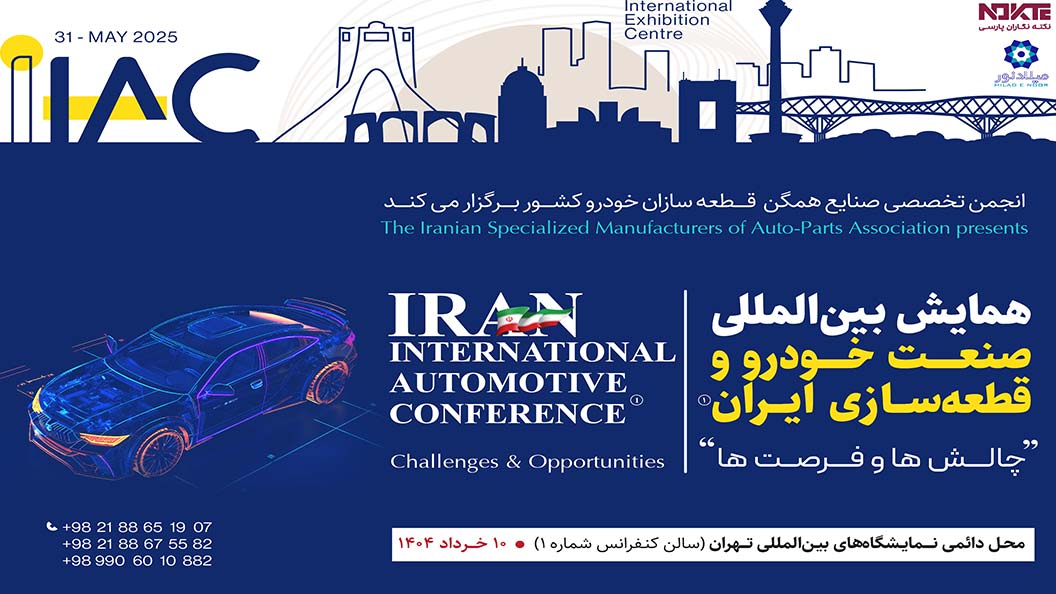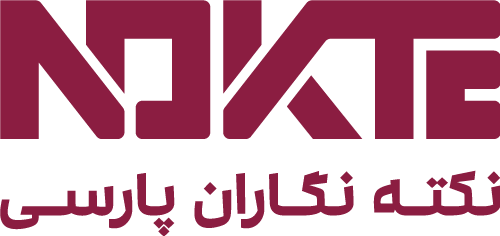
The International Conference on Iran’s Automotive Industry and Parts Manufacturing was held on Saturday at Tehran International Exhibitions Center. At the start of the event, after reciting verses from the Quran and the national anthem, Omid Ghalibaf, the expert host, said that regardless of what happens—whether production volume rises or falls, negotiations succeed or fail—the parts industry might be harmed by that event. This industry is an intermediary link and faces double uncertainty regarding economic and political developments.
Next, Mohammad Reza Najafimanesh, one of the country’s parts manufacturers, thanked the attendees and listed the general challenges facing the industry: management and government-mandated pricing. He added that currently the management of one unit, Iran Khodro, has been transferred to the private sector, and SAIPA should also soon be privatized despite considerable opposition.
He said: “In the past, when the industry was government-run, profitability was not a major concern. But if the industry is handed over to private management, it must be profitable. The most urgent challenge is pricing in the industry. I hope assistance is provided to resolve this. Industrialists face many problems in currency allocation, while importers receive two to three times the quota of producers, yet it happens easily. The process must be expedited. Despite all our problems, we persevere to serve the country and advance production.”
Ghalibaf, the host, referred to the lack of new innovations at this year’s exhibition, stating: “Innovation is stuck and growth has stopped. Although we have all industries such as plastics and steel, why is our industry dormant despite these advantages?”
The next speaker was Dr. Amir Hassan Kakayi, a university professor.
At the start of his speech, Amir Hassan Kakayi said: “I intend to talk about the roots of the crisis, not the solutions. Environmental changes in the world and Iran are immense. Paradigm shifts have occurred. We face general international crises that everyone is involved in, but other countries manage them; for example, Trump raised tariffs while we lowered them. Crises fall into categories: natural crises and human-caused behaviors such as global warming and air pollution; paradigm shifts where the rules of the game change. While we operate under the old paradigm, when everyone else is disembarking from the globalization train, we are still boarding. Scientific paradigms, business, transport, energy, etc. are changing rapidly. The winner in this change benefits and rises; the loser clings to old paradigms. Serious crises sometimes lead to revolution and war. Currently, AI (Level 6) has arrived, and we remain at Level 3, while the impact of Level 6 will become clear in 2-3 years.”
Reviewing internal crises—environmental, infrastructural, economic, social, policymaking, geopolitical, exclusion from official global economic chains, lack of planning, severe inflation above 30% for 5 consecutive years (unprecedented in 60 years), loss of long-term relations, and populist policies aimed at welfare increases over the past 3 years—he said: “The assembly-line industry has increased 300% in the last three years, but anti-development policies, rent-seeking, and patronage have also increased. Our problem is that we do not have a proper plan to solve it. We face crises in consumer markets, and a parliamentary plan opened the door to importing used cars. Globally, these crises are worked on, but we think importing will lower prices. Privatizing two automakers will not solve the problem, and without proper government action, this year will be very bad.”
Next, Dr. Rezaei, CEO of Azin Khodro, described the automotive and parts industry as a strategic sector with the most complex, extensive, largest, and most international supply chain worldwide. Its financial turnover is $3,500 billion, international transactions $3.9 billion, and R&D costs $120 billion, making it the third largest industry after IT and pharmaceuticals. This industry is a national asset, and today it has reached a point where the Leader has emphasized the economy and production as the main focus over the past 11 years. Therefore, the industry must be organized with clear goals. The parts industry is a national asset, but currently, workforce losses are weakening the sector.
Arash Mohibinejad, Secretary of the Homogeneous Parts Manufacturers Association, said: “There are currently 1,200 passenger car parts manufacturers in 17 provinces and 17 specialized associations forming the National Parts Manufacturers Association. The accumulated losses of the automotive industry reached 250 trillion IRR by last year; the price gap between factory gate and market was 500 trillion IRR. Currently, 110 trillion IRR is unresolved, and 40 trillion IRR overdue debts exist, while future sales amount to 90 trillion IRR and current debts 480 trillion IRR for the two largest parts makers. We have passed two rounds of sanctions, after which problems worsened. Iran Khodro’s production decreased by 1% in 1403 (Iranian calendar year) compared to the previous year and Saipa’s by 27%, while private companies are 15% ahead. The Ministry of Industry expects 1.5 million vehicles produced this year, conditional on prerequisites. The first issue is liquidity supply, and 9 solutions have been proposed, including mobilizing idle public capital, bank loans, supply chain financing, increasing automotive cash capital, releasing raw materials via waterways, long-term raw material purchases, selling surplus assets and treasury stocks, pre-selling and immediate sale recovery, and financial resource savings.”
The next part of the conference was a specialized panel on the automotive and parts industry. At the start, PirMohammadi, CEO of Iran Khodro, said: “On May 11 this year, we sent a crisis letter to the Minister of Industry because our products were not priced and we are incurring losses. The letter stated we cannot sell products, but no response came in 20 days. We also informed the minister about currency allocation, which only opened after two and a half months, and diesel problems. The automotive industry is loss-making, and no one invests in it. Global industrial development passes through the automotive sector. We started two new platforms at Iran Khodro. Old technologies cannot guarantee quality. Pricing issues must be solved. Delaying manufacturers for three months led to 150 trillion IRR accumulated losses and high-interest bank loans, making continuation impossible.”
Dr. Ameli, acting Deputy Minister for Machinery and Equipment at the Ministry of Industry, said: “Currently, industry is not recognized as a primary issue and priority by the government and authorities. Bureaucracy, taxes, and other issues exist. There are 29 companies involved in the automotive industry. To progress, the path must be defined. A national automotive development document is being prepared, and we must be consistent to reach 5-year plan goals: a fixed tariff system, a 5-year quality improvement plan, defined fuel baskets for products, etc. The government, parliament, Expediency Council, and heads of powers must cooperate to finalize the 5-year plan. If resolved, all subsidiary problems will be fixed. For requests under $5 million, provinces are approved for allocation. System problems must be fixed. We do not favor the current pricing model but it is a legacy system requiring prerequisites. We need signatures from all 29 decision-makers to accept removing mandatory pricing. We must create a like-minded group. We are revising vehicle prices and hope to resolve this soon.”
PirMohammadi responded: “We cannot please everyone. For three months, our documents have been submitted to the Consumer Protection Organization. We produced 60,000 vehicles in these three months, losing 20 trillion IRR in total. Ultimately, vehicles will be listed on the stock exchange.”
Najafi Manesh, who supports listing vehicles on the stock exchange, said: “This solution can be implemented from tomorrow morning.” Mohibinejad added: “We opposed the stock exchange before, but since all other methods are wrong, this is the most correct legal and least incorrect way. Forming a National Automotive Committee is a solution, which makes a unified binding decision and revives the Automotive Policy Council within the Ministry of Industry.”
During the panel, Keshavarz, CEO of Saipa, joined the conversation and said: “Iran Khodro and Saipa board members produce goods and must profit but have been prohibited by authorities and suffered losses. The solution is simple: sell at minimum profit to resolve issues. Profit must be secured through buyers. Parallel organizations yield no results, and this must be resolved in the coming days.”
After the panel, Engineer Bahranian spoke about automotive industry problems: “Neither the government understands the importance of this industry nor has qualified management. Parliament and government lacked and refused to gain sufficient knowledge. Those appointed lack professional competence. The defense, automotive, and oil industries owe the parts manufacturing industry. Officials harm the automotive industry to gain popularity. While the defense sector has a commander, the automotive sector has more than 29 bodies voicing opinions. Our problem is repeated trivial plans. Those who caused the problem cannot solve it.”
The final speaker was Hassan Ali Mohammadi Nia, a member of parliament. At the end, he said: “Over the years, we have stood with producers and done our best to take effective steps. The Leader’s directive on production is based on investment rooted in the private sector, and we must provide the environment and process. Many factors are involved. Parliament formed a commission on production investment and removing obstacles; private sector voices were heard. We rely more on Guild Chamber research because they are on the ground. Producers are soldiers in the economic war and should not despair. Unjust sanctions cannot bring us down. We have heard problems and previously moved by trial and error but must avoid repeating mistakes. In the supply chain, we mentioned everyone except the consumer, who is the key factor. The entire chain depends on the consumer. We must see the chain wholly and consider the customer’s preferences and budget. Our country produces mass quantities but have we considered preferences? Problems come from various sources but are seen in the Ministry of Industry. Regarding mandatory pricing, we must reach a comprehensive model. Unilateral views will not succeed. Hopefully, we will reach a point where both the consumer and the whole supply chain are supported.”
